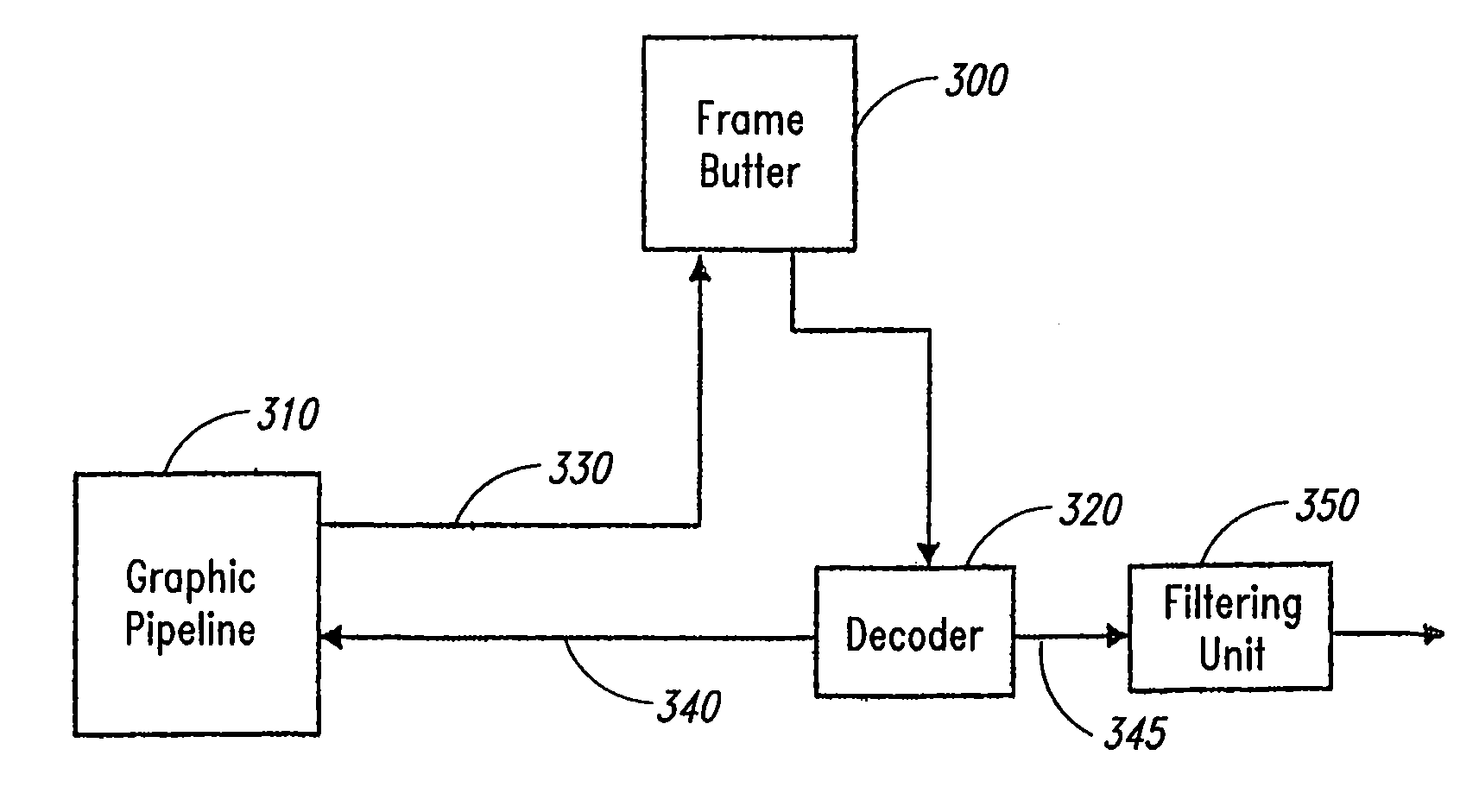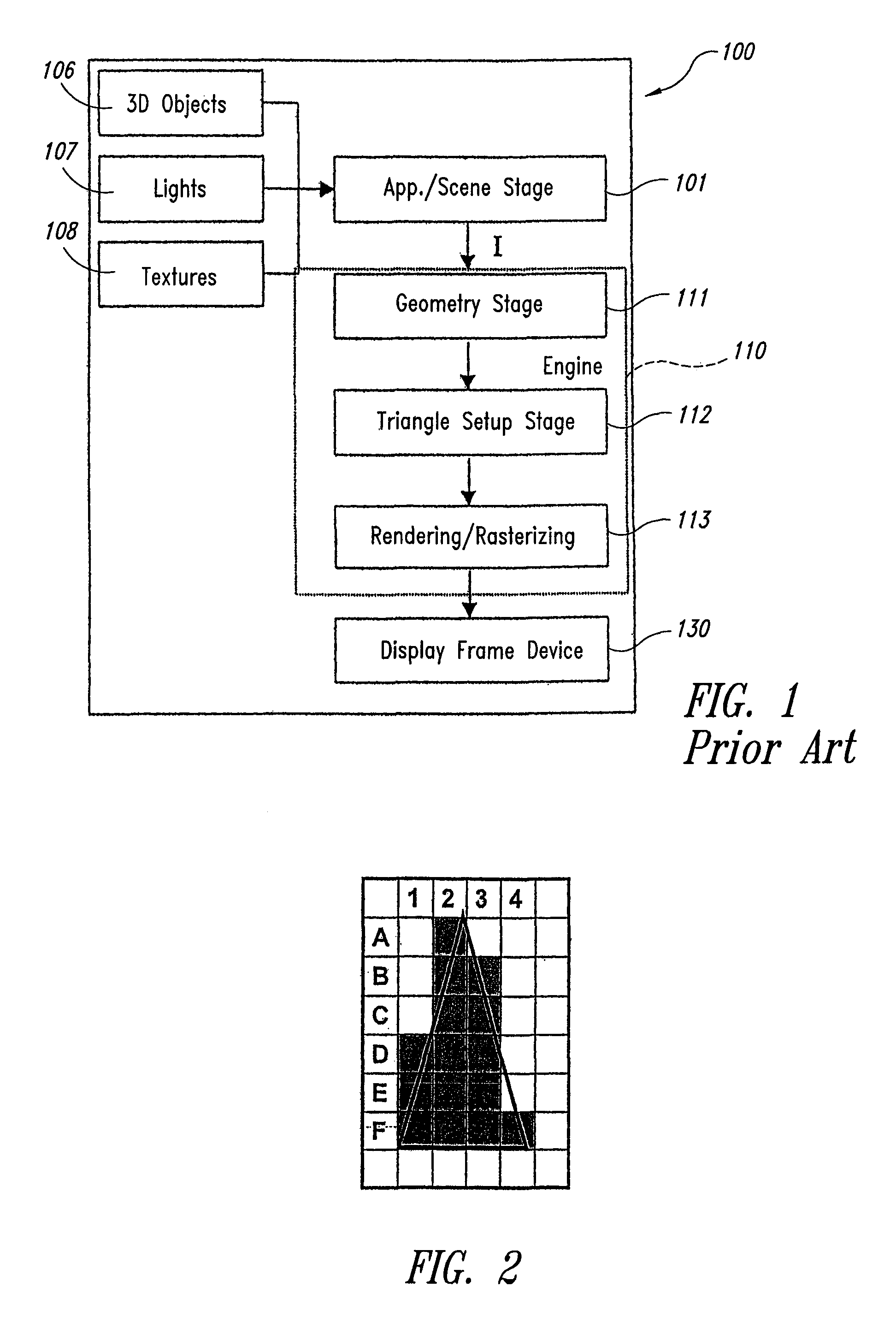Method and system for signal processing, for instance for mobile 3D graphic pipelines, and computer program product therefor
a signal processing and pipeline technology, applied in the field of 3d graphic technology, can solve problems such as insufficient pixel availability, inability to adequately consider possible approaches, and annoying aliasing, and achieve the effect of reducing aliasing artifacts in computer graphics
- Summary
- Abstract
- Description
- Claims
- Application Information
AI Technical Summary
Benefits of technology
Problems solved by technology
Method used
Image
Examples
case 1
[0219][0220]the following sub-pixels A, B, C, D, AA, BB, CC, DD are each multiplied by a different coefficient, added together and the sum is divided by the sum of all coefficients used
case 2
[0221][0222]the maximum (or minimum) distance between (A, D), (C, B), (AA, DD), (BB, CC) is found and then the final pixel if the average of the above sub-pixel pair found as maximum (or minimum). Now more details are given about Case 1.
[0223]Referring to FIG. 7, P1, P2, P3, P4 are the sub-samples located at the same place as were generated by the RGSS 4× algorithm.
[0224]Step 3, case 1 will create them as linear combination of the sub-sample generated during step 2.
[0225]For instance:
P1=1 / d1*A+1 / d2*AA+1 / d3*C / (1 / d1+1 / d2+1 / d3)
P2=1 / d1*B+1 / d2*BB+1 / d3*A / (1 / d1+1 / d2+1 / d3)
P3=1 / d1*D+1 / d2*DD+1 / d3*B / (1 / d1+1 / d2+1 / d3)
P4=1 / d1*C+1 / d2*CC+1 / d3*D / (1 / d1+1 / d2+1 / d3)
and the pixels sent to the display will be the average of P1,P2,P3,P4.
[0226]FIG. 8 shows how for each pixel position (i, j) the grid shown in FIG. 7 is “composed by sub-pixel”.
[0227]Another option to interpolate AA, BB, CC, DD pixels is to use for each of them, four very close and surrounding sub-pixels, and see what image surface shape they ...
PUM
 Login to View More
Login to View More Abstract
Description
Claims
Application Information
 Login to View More
Login to View More - R&D
- Intellectual Property
- Life Sciences
- Materials
- Tech Scout
- Unparalleled Data Quality
- Higher Quality Content
- 60% Fewer Hallucinations
Browse by: Latest US Patents, China's latest patents, Technical Efficacy Thesaurus, Application Domain, Technology Topic, Popular Technical Reports.
© 2025 PatSnap. All rights reserved.Legal|Privacy policy|Modern Slavery Act Transparency Statement|Sitemap|About US| Contact US: help@patsnap.com



